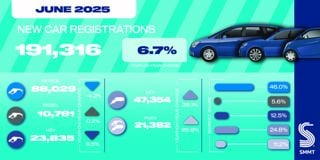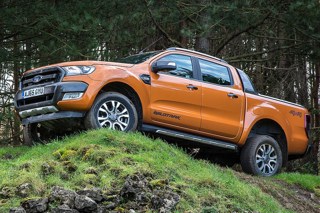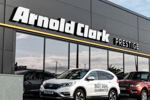The going is getting even tougher for the big three of the UK’s volume market as premium brands accelerate their onslaught into mainstream territory, with competition increasing as more new models are launched.
Ford has lost almost three percentage points of share in the UK’s new car market in a decade. In 2006, its share totalled 14.69%, with 344,408 registrations, but this declined to 11.82% with 318,316 registrations last year. The decline has prompted actions since 2012 to consolidate its franchised network, which now stands at 489 sites, but numbered about 600 outlets a decade ago. In many cases, the new FordStore concept dealerships occupy large urban territories previously home to two or more showrooms.
In 2016, Vauxhall’s new car market share fell below 10% for the first time this century (see our interview with MD Rory Harvey on page 34). It ended the year with 9.32% share, compared with 12.87% in 2006, and its registration volumes in 2016 were 250,955, compared with 301,679 in 2006.
Even Volkswagen closed 2016 with its lowest market share since 2005. In 2006, it held 8.1% share with 189,959 registrations, but due to overall market growth in 2016 it held only 7.69% share, despite 207,028 registrations.
Tactical registrations
In 2016, Vauxhall’s 18,811-unit decline in volumes came despite driving 4,500 extra cars into its captive fleet and rental channels. It was not sufficient to offset a decline of 11,320 private registrations and a 7,453 cutback in Motability sales.
Ford was unable to keep pace with the overall market, and declined in all channels. Its largest cut of 8,309 units was in rental, almost a fifth (17.9%) of the prior year’s short-cycle volume, but next came the private channel, down 4,001 units. Motability and captive fleet together lost 5,926 registrations compared with 2015, while true fleet registrations suffered a small drop of 1,285 cars.
A 58% jump in captive fleet registrations, which include management cars, press fleet and marketing stock, took Volkswagen’s volume in that channel above 9,000 units. However, every other channel recorded a decrease for the German brand. True fleet was most heavily hit, with 8,516 fewer registrations, while its dealer network experienced drops of 4,836 and 1,909 registrations in the private and Motability channels respectively. Rental declined by 4,892 units.
Mainstream muscled out
Detailed examination of the SMMT data suggests the big three mainstream brands were muscled out by strong tactical activity from premium brands. These continue to win appeal from private buyers, fleet operators, user-choosers and even Motability customers, thanks to an armoury of badge appeal, robust residual values, dealer talent and keenly positioned monthly payment finance. When the PCP payment on an Audi A3 is only the price of a family takeaway meal above a Vauxhall Astra, it puts more hurdles in Vauxhall’s path.
Tot up the growth achieved by Audi, BMW, Infiniti, Jaguar, Land Rover, Lexus, Mercedes-Benz and Volvo and it’s clear premium brands were the winners of 2016. In total, these eight brands grew registration volumes by 79,805 units. To put that in perspective, the year-on-year growth of the total new car market in 2016 was 59,283 units.
Mercedes alone added 24,574 units to its new car volumes, the largest year-on-year increase of any individual brand. While the increase spanned every channel, the good news for its dealer network was that the largest improvements were in contract hire and leasing, up 8,563 units to 48,075, and in the private market, up 7,426 cars to 65,549. The premium brand’s push in short-cycle channels may be less welcome, however – rental volumes rose by 2,332 to 12,611 units and its captive fleet cars increased by 679 to 3,395.
BMW’s volumes increased overall too, by 15,202 registrations, putting it in second place for year-on-year growth. However, its private registrations dropped by 8.7%, or 6,237 cars.
Making up for that decline, BMW pushed an extra 6,966 short-cycle units through rental and captive fleet – these accounted for 14% of its volumes by year-end. The strongest growth came in true fleet, where an additional 12,678 units of fleet and contract hire will have benefitted its dealer network.
Audi reached 177,304 registrations after a 10,595-unit rise in volumes. Other than Motability, which contributed a 3,677-car increase and doubled the 2015 volume, Audi’s growth was fairly consistent across the remaining channels. True fleet provided 4,005 extra units, and private registrations rose by 1,624, with the remaining 1,289 incremental units coming through short-cycle channels.
The figures from Audi, BMW and Mercedes suggest that, in the true fleet market, badge prestige and better whole life costs, linked to stronger residual values, carry a lot of influence. As the market is expected to rely on the fleet sectors to shore it up in 2017, the mainstream brands ought to be concerned about how they can fight more effectively to claw back lost business.


















Login to comment
Comments
No comments have been made yet.